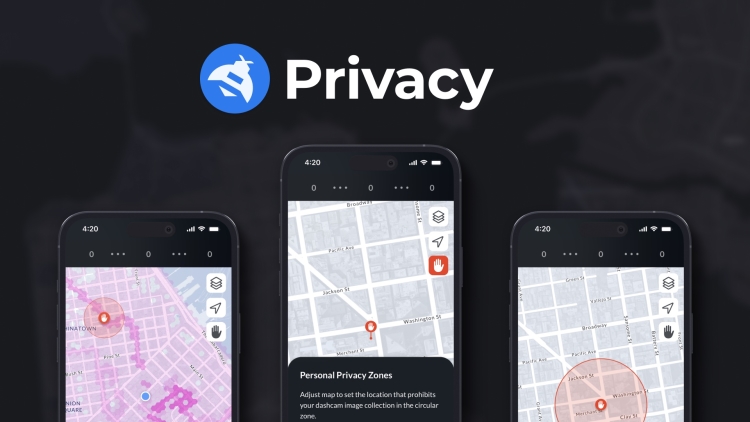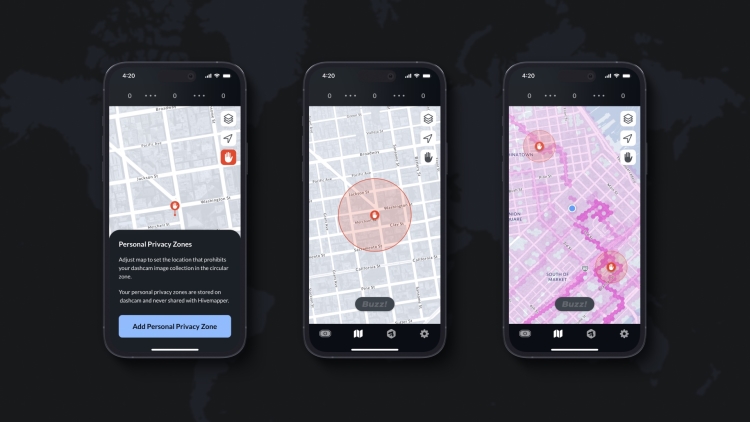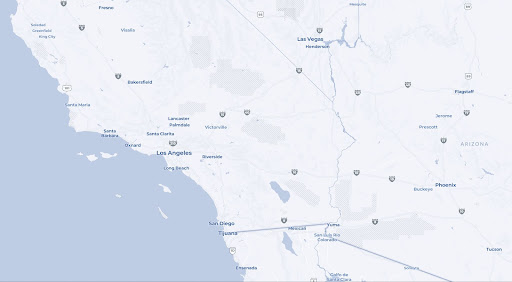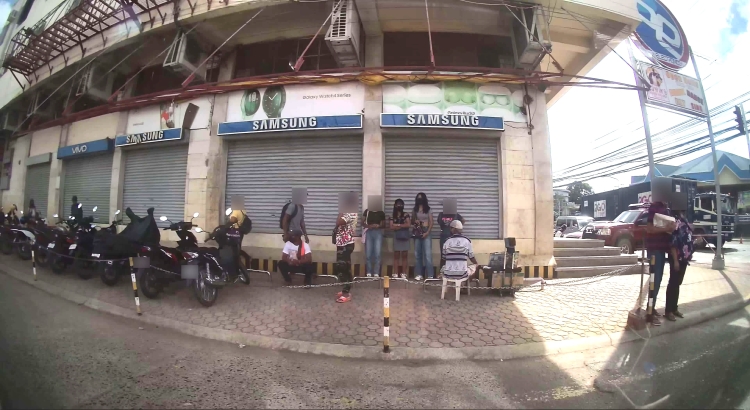The Latest Buzz
How Hivemapper Protects Your Privacy While Mapping the World

Hivemapper prioritizes user privacy with robust measures, ensuring a safe journey as contributors map the globe.
One of Hivemapper’s core principles is safeguarding the privacy of everyone who contributes to building the map as they go about their daily lives.
This may sound obvious, but it isn’t how much of the mapping industry operates. Navigation apps often harvest more user data than necessary, commodifying it for their own profit. Dashcam companies often collect user images without obtaining clear consent or offering fair compensation. Sometimes they store invasive videos and images in careless ways that make privacy breaches inevitable.
As thousands of Hivemapper contributors earn rewards for passively sharing map data while they drive throughout the world, no personal information is ever collected, let alone monetized. The reason Hivemapper uses randomized three-word usernames like “Outgoing Goldenrod Dog” isn’t to be fun or quirky — it's an intentional design choice that dissociates location data and contributions from individuals, allowing them to participate without exposing their identity. The network doesn’t know the identity of the person who mapped each road, and it never will.
Because privacy is so important, Hivemapper has been innovating new features to continue building on this commitment. These include:
- Personal Privacy Zones: Define specific areas, like your home or workplace, where your dashcam pauses data collection, giving you control over what gets mapped.
- Network Privacy Zones: These are sensitive areas, such as military bases, where the network automatically blocks data collection.
- Edge Processing: The blurring of faces, bodies, and license plates happens directly on your dashcam — raw images are never uploaded to Hivemapper.
We’re relentlessly working to build the most private and permissionless mapping network in the world. For a detailed breakdown of our privacy practices, and to see a complete list of where mapping is taking place, please review our privacy page.
Personal Privacy Zones
Hivemapper’s development of Personal Privacy Zones (PPZs) is a direct response to the needs and preferences expressed by the contributor community, emphasizing the network’s commitment to empowering users with control over their own data. This feature enables a contributor to define specific geographic areas — be it around their home, workplace, or any other location — as zones where their dashcam will stop recording. Whenever the contributor’s dashcam enters a PPZ, it automatically pauses data collection. This eliminates a contributor’s need to manually stop or disable the dashcam as they navigate spaces that they don’t want to map.
Hivemapper understands that contributors often start their journeys from personal locations, like their homes, and they may not want to set up a PPZ for every destination they visit. To respect this, the network will also pause mapping for the first 200 meters of every journey, so that we’re looking out for contributors whether or not they have designated specific privacy zones. This is a simple feature with a big impact. It creates a buffer zone that shields the driver’s initial location — safeguarding privacy at the outset by default.
Network Privacy Zones
Network Privacy Zones (NPZs) extend Hivemapper’s commitment to privacy from individual users to sensitive areas where everyone’s data collection will be paused. If a location such as a military base, nuclear power plant, or private industrial facility is designated as an NPZ, the Hivemapper Network automatically blocks collection within that area.
The subtle shading on this map indicates the areas of U.S. military bases in southern California and Arizona.
The Hivemapper Foundation introduced and decided on this feature through Mapping Improvement Proposal 5 (MIP-5) so that the community could discuss these parameters and provide feedback. Hivemapper has initially integrated more than 700 NPZs using an open-source dataset of U.S. military bases, implemented as a first step. This is important functionality to have working effectively, and we will continue to improve it.
Feedback from contributors noted that some initial zones inadvertently include segments of public roads, which could restrict legitimate data collection. This issue stems from the reliance on public datasets. A Network Privacy Committee of community members will be tasked with refining these zones and eliminating unnecessary constraints.
If you are interested in applying to join the Network Privacy Committee, please fill out this form.
Privacy Preserved at the Edge
Hivemapper's decision to process face, body, and license plate detection on the edge — that is, on the dashcam or phone — is an innovative measure that ensures that Hivemapper is never in possession of raw, unblurred images.
License plates and faces are blurred on the dashcam. Hivemapper contributors uploaded the above images.
This reflects Hivemapper's efforts to prioritize privacy at every stage of the network. By processing sensitive data directly on the dashcam, Hivemapper proactively minimizes the risk of exposing personal information.
Despite the best of intentions and designs, unblurred objects can occasionally slip through. To address this, Hivemapper provides a simple, accessible way for users to request the removal or additional blurring of data. To request that a face, license plate, or your own house be removed, please fill out this form.
A Bedrock Principle
Hivemapper's approach to digital mapping treats the shielding of personal information as an essential element, and demonstrates how robust data collection for the creation of a detailed world map can coexist with respect for sensitive areas. As contributors help shape the world map, the network ensures that their personal boundaries are consistently protected.
At every turn — from initial drive to data processing and community engagement — Hivemapper’s practices are shaped by a high regard for individual autonomy and a steadfast commitment to transparency. As the mapping network grows, so will the focus on refining its technologies, learning from its community of contributors and map customers, and making adjustments based on constructive feedback.
After all, exploring and mapping the world shouldn't come at the expense of privacy.
Share Post






